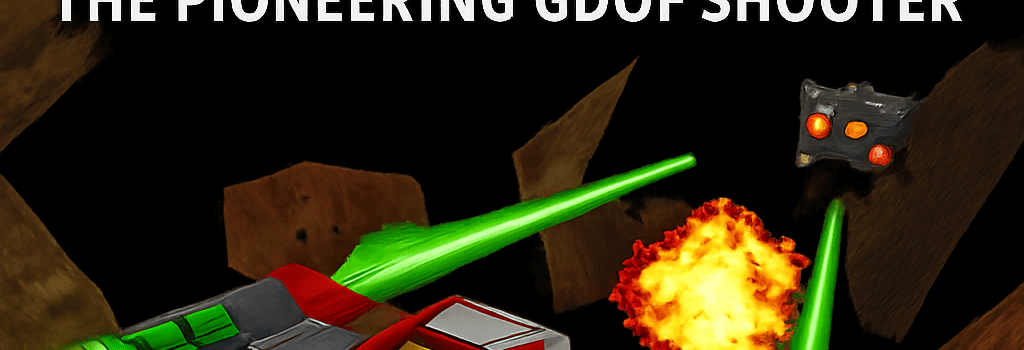Rediscovering Descent: The Pioneering 6DOF Shooter

Introduction
Descent blasted onto the PC scene in 1995 as the first fully 3D six-degrees-of-freedom (6DOF) shooter. Developed by Parallax Software and published by Interplay, it broke new ground with its binary space partitioning (BSP) engine, dynamic lighting, and free-form movement. Even today, its influence ripples through modern titles and community projects.
Recently, hobbyists released an early VR prototype—DescentVR—for head-tracked 6DOF action on Valve Index and Oculus headsets. Meanwhile, GOG.com reported a 20% uptick in Descent purchases in Q1 2025 as younger players discover the classic.
Single Player Campaign
At launch, Descent posed players as a mercenary infiltrating malfunctioning mines overrun by rogue robots. Its core gameplay loop—destroy a reactor, navigate labyrinthine tunnels, then escape before self-destruct—remains uniquely tense.
- Levels: 30 campaign missions plus hidden secret stages
- Graphics: 320×200 VGA, 256-color palette; later patched to support 640×480
- Performance: ~2,000 polygons per frame on a 66 MHz 486 CPU with 8 MB RAM
Controls initially leaned on keyboard for six axes (forward/back, strafe, vertical, yaw, pitch, roll). Many players discovered flight sticks unlocked the full potential—memory of my first CH Flightstick Pro is as vivid as the original tunnels.
Multiplayer and Network Architecture
Long before Steam, Descent’s Anarchy mode pioneered online deathmatches over IPX and later TCP/IP via Kali. Peer-to-peer matchmaking and client-side prediction were rudimentary, but they laid the foundation for modern FPS netcode.
“Descent’s network layer used a custom UDP-style protocol on top of IPX,” says Alex Rivera, netcode specialist. “It managed entity snapshots at 10 Hz, trading off latency with bandwidth constraints on modems.”
Today, community servers still host scheduled matches via Discord channels, and recent patches reduce packet loss to under 2% on broadband.
Engine Architecture and Technical Innovations
At the heart of Descent is a BSP-based renderer. Levels are carved into convex polyhedra; portals connect rooms, culling unseen geometry. The engine was written in C with performance-critical loops in x86 assembly, handling full 360° rotations without gimbal lock.
Key Features
- Dynamic lighting: real-time sector lights and flicker effects
- True 6DOF: independent axes for translation and rotation
- Modular AI: state machines controlling robot behaviors
- Audio: streamed .VOC and .MID files for low CPU overhead
Community Revival and Modern Mods
Open-source projects DXX-Rebirth and DXX-Redux restore widescreen resolutions, mouse look, modern controller support, and even enhanced shaders—all while preserving original assets and game logic.
- DXX-Rebirth: Active GitHub repo with monthly commits (v0.59 released May 2025)
- DXX-Redux: Adds real-time shadow mapping and bloom passes
- DescentVR: Early alpha for SteamVR released June 2025
Legacy and Industry Impact
Descent’s innovations influenced engines like id Tech 2 and Serious Engine. It proved that free-form 3D movement could be commercially viable, inspiring space sims and zero-G shooters.
Parallax Software evolved into Volition, creators of Saints Row. In 2023, Embracer Group shut down Volition amid financial restructuring, sparking discussions about preserving studio legacies.
Future Outlook
Fan interest and source-code releases under GPL in early 2025 have led to unofficial ports for ARM Linux, a mobile prototype for Android, and community calls for an official sequel. Whether any rights holders greenlight new development remains to be seen.
Conclusion
Thirty years on, Descent endures as a technical milestone. Its BSP engine, 6DOF mechanics, and early multiplayer form the blueprint for modern shooters. If you’re curious, install one of the community patches and experience a piece of gaming history—perhaps in VR, perhaps on your phone, but always with that same pulse-pounding rush.